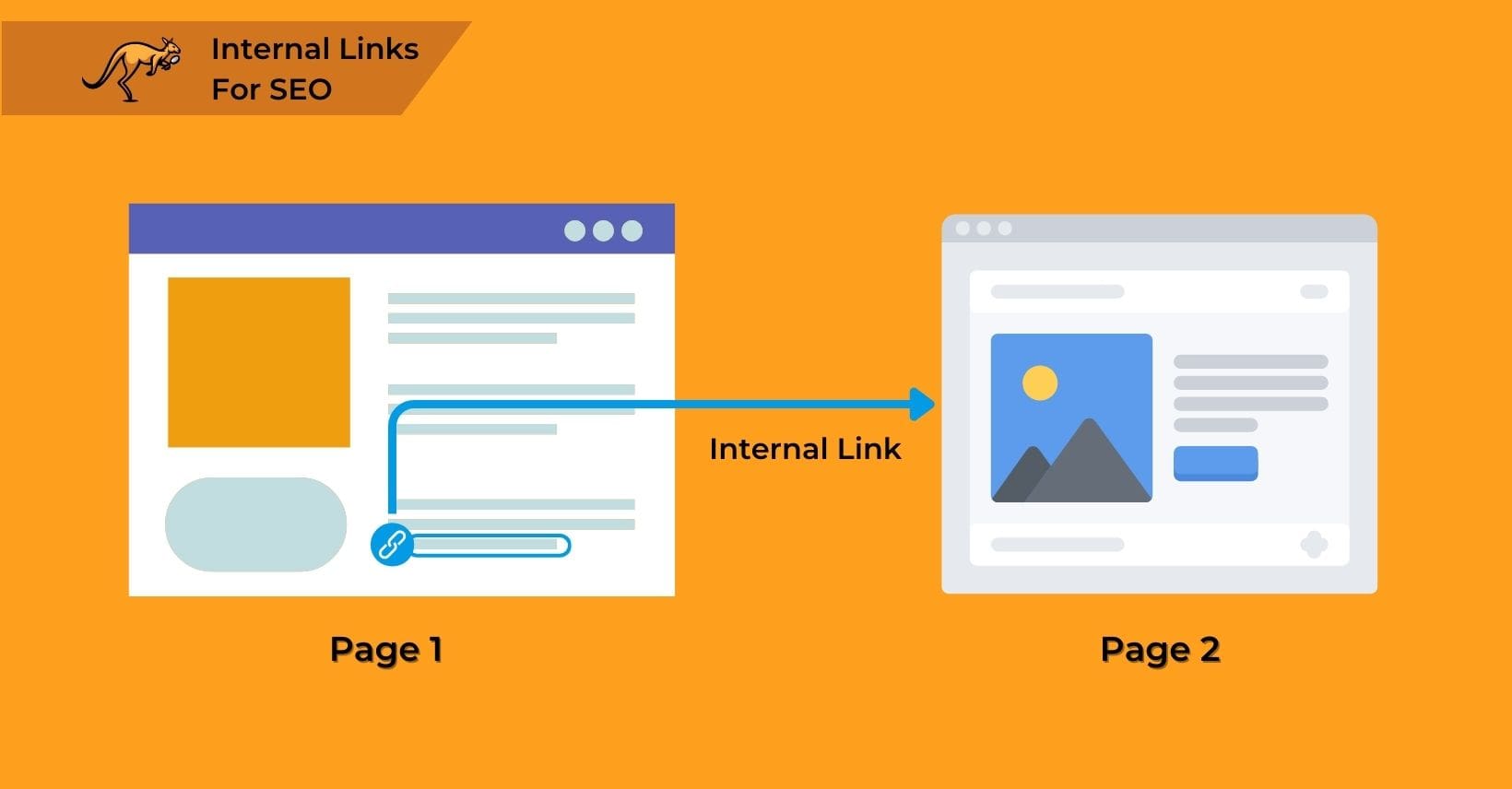Google constantly tweaks its SEO algorithm, making about 500 modifications yearly. While these changes are minor, they significantly impact your inbound marketing plan.
SEO ranking factors have evolved drastically over the years; strategies that were effective five years ago may no longer work despite similar core web vitals. SEO involves optimizing your content to appear more frequently in search results.
Overlooking any aspect can make your content nearly invisible. However, proper SEO can lead to higher traffic, better conversions, and increased sales.
To help you succeed, we’ve compiled top SEO tips to enhance your website’s performance in SERP rankings.
These tips range from user experience improvements to meta-description management and more.
Each small adjustment contributes to better rankings in your field.
Understanding these tips is crucial, but first, let’s explore the fundamentals of SEO.
What is SEO?

SEO stands for search engine optimization. SEO practitioners enhance websites, pages, and content to improve their rankings on search engines like Google. This collection of strategies boosts visibility, positioning, and usability in organic search results, covering website pages, videos, photos, local listings, and more. Since organic search is the primary method for discovering online content, adhering to SEO best practices ensures your digital content is found and read by the public, thus increasing your website’s organic traffic.
Understanding SEO starts with knowing how search engines operate. Search engines use crawlers to gather information from the web and build extensive databases called “indices.” These crawlers begin at a known webpage and follow links to other pages across the internet. The more links Google finds pointing to a specific resource, the more relevant it deems that resource for particular search queries. This process helps search engines decide which content deserves high rankings for specific searches.
SEO consists of three main components: on-page SEO, off-page SEO, and technical SEO. These areas help search engines locate, crawl, index, understand, and rank your content. Our tips will cover these components to optimize your search results and ensure customers find your website.
Traditionally, Google’s organic results displayed ten links per query. Still, this number now varies based on the device, whether a desktop, mobile phone or another device. Optimizing your search results is crucial to ensuring visibility.
SEO Tips
Enhance your website’s performance with these SEO insights. Elevate your rankings in search engine results pages by adhering to these tried-and-true strategies. Understand that SEO demands consistency and patience for tangible outcomes, so persistence is key. Regularly refine your methods, keep abreast of industry standards, and monitor your progress to continuously optimize your website’s visibility and attract organic traffic.
Here’s the list of tips we compiled to assist you on your SEO journey.
Never Get Distracted From User Experience
User experience signals play a pivotal role in search engine rankings. Google highlights that RankBrain is its third most crucial ranking factor, a trend set to persist and likely increase in 2024. Many SEO specialists find RankBrain complex, but grasping its importance is vital. RankBrain is a machine learning algorithm that helps Google decide how websites should rank in search results based on user interaction. If users click on a result and leave quickly, the site’s ranking drops. Conversely, if users stay on the site longer, the ranking improves.
Focusing on medium-tail keywords can yield excellent results. Optimizing your page for a medium-tail keyword often leads to high rankings for that keyword and many related ones, maximizing your SEO efforts. To ensure your content aligns with user intent and stands out, paying attention to the search results is important
Never Get Distracted From User Experience
User experience signals play a pivotal role in search engine rankings. Google highlights that RankBrain is its third most crucial ranking factor, a trend set to persist and likely increase in 2024. Many SEO specialists find RankBrain complex, but grasping its importance is vital. RankBrain is a machine learning algorithm that helps Google decide how websites should rank in search results based on user interaction. If users click on a result and leave quickly, the site’s ranking drops. Conversely, if users stay on the site longer, the ranking improves.
Focusing on medium-tail keywords can yield excellent results. Optimizing your page for a medium-tail keyword often leads to high rankings for that keyword and many related ones, maximizing your SEO efforts. To ensure your content aligns with user intent and stands out, paying attention to the search results is important
Pay Attention to the SERPs
Although an algorithm determines where every site is placed on a search engine’s results page (SERPs), the system rewards web publishers that provide the best content available online.
Although algorithms determine the placement of every site on a search engine results page (SERP), the system rewards web publishers who deliver the best content. Understanding search intent is essential for this. By examining a keyword’s SERP, we can identify the issues users are trying to solve. Tools offer valuable insights but often rely on outdated or biased data sets, providing an incomplete picture.
SEOs should blend tool-based insights with real-time SERP observations. When targeting a new keyword, refreshing content, or diagnosing low-traffic areas, analyze which pages currently rank for primary queries on Google.
Focus on search features, content types (product pages, listicles, tutorials), and ranking websites (databases, companies, media outlets, directories). Assess where the first organic result appears and how your page presents itself (title, meta description, date, jump links, schema). Use an incognito window, clear cache, cookies, and history, and conduct searches on both desktop and mobile for unbiased data.
By taking these steps, you can identify key areas for improvement. Another tactic to enhance your strategy involves checking for patterns and overlaps in SERP results.
Try a SERP Overlap Test
When examining the SERPs, some SEOs opt for a SERP overlap test. This test determines if addressing multiple queries with one piece of content is viable. Curious about what this test entails? It’s a simple process any SEO can master.
Initially, perform a search for Keyword A followed by Keyword B in an incognito browser window. If the SERPs vary significantly, Google treats the queries as independent searches.
However, they’re considered the same query if there’s substantial overlap. This insight hints at a strategy to optimize content for multiple keywords seamlessly.
Posts that Nearly Rank High are the Easiest Boost
Enhancing your rankings involves a simple yet effective strategy: identifying pages that nearly rank high and giving them a makeover. In Google Analytics, navigate to Acquisition » Search Console » Queries and set up a filter showing search phrases with an average position above 10.
These represent pages on the brink of first-page visibility. Instead of creating new content, focus on refining existing ones. Enhance them with more detail, images, data, and thorough bylines. Prioritizing quality naturally increases length and keyword usage.
As you edit, consider relevant subtopics from the “people also ask” and “related searches” sections in search results. Integrating this makeover into routine content audits ensures your site maintains high standards.
This approach propels you ahead in the SEO game without generating extensive new content. And speaking of SEO tips, let’s talk about something worth your attention: Featured Snippets.
Featured Snippets: Yes, They’re Worth It
Appearing roughly 11% of search outcomes, highlighted snippets emerge after Google ads but before ranking results on SERP pages. These snippets are displayed with media such as images or tables and draw attention, as well as siphon clicks from top-rated results. Positioned as rank 0 on SERP, they’re valuable. Featured snippets, used by search engines, directly address queries on the SERP, eliminating the need for navigation. Their influence on organic search results underscores the importance of securing them.
Crafting content tailored to specific queries increases the chance of inclusion in featured snippets. It’s crucial that your snippet’s content directly corresponds to the user’s search term to avoid algorithmic mismatches. Structuring your blog content in a way that signals direct answers enhances visibility. While targeting these snippets has become more standardized, clean code alone won’t guarantee success.
Although the selection criteria remain unclear, clarity and formatting play key roles. Moreover, beyond the technical aspects, understanding user intent
Cut the Fluff
Prioritizing quality over quantity is crucial in effective SEO. Simply having a plethora of indexed pages doesn’t guarantee higher organic traffic. Each page on your site should contribute value and engagement. Regularly assess your content and consider removing underperforming pages to optimize site speed and performance. Focus on substantive, engaging content that resonates with visitors.
Remove filler material to ensure every post delivers impact. Video Marketing is your Secret Weapon, and optimizing content quality is just the beginning, as we’ll explore another powerful strategy next.
Video Marketing is your Secret Weapon
Overlooked by many marketers, video marketing stands as an untapped well of potential amidst the crowded SEO landscape. While most focus on traditional SEO tactics, the realm of video remains relatively unexplored, presenting a golden opportunity to seize the attention of eager audiences.
As consumers increasingly crave dynamic content experiences, integrating well-crafted videos into your strategy becomes paramount. However, it’s crucial not to abandon your existing content efforts entirely. Instead, consider weaving video seamlessly into your marketing tapestry, enhancing your online presence and keeping pace with evolving consumer preferences.
As you optimize your content more deeply, another crucial aspect emerges: ensuring a holistic approach to maximizing your online visibility.
Don’t Forget On-Page SEO
On-page SEO involves optimizing a website’s front and back-end components to enhance search engine rankings. Crucial elements like high-quality content, page titles, headers, meta descriptions, and alt-text for images contribute significantly. Generating optimized page copy is key to improving SERP ranks. This involves incorporating the target keyword, ensuring contextual relevance, and addressing user queries comprehensively.
The aim is to demonstrate to search engines that all possible user questions related to a query have been answered. Analyzing your core web vitals report will highlight which pages require optimization.
Unlocking the potential of structured data could be the next step in enhancing your website’s visibility.
Maximize User Engagement with your Content
Design your pages to foster engagement throughout the content marketing process. Every aspect, from updating existing content to crafting new material, should prioritize captivating real human readers. Ensuring an intriguing and responsive site with high-quality content is paramount.
Optimize readability through whitespace, headers, concise paragraphs, and relevant visuals to prolong user interaction. Incorporate internal links addressing readers’ queries to decrease bounce rates and deepen engagement. Integrate LSI keywords and anticipate users’ further inquiries to enrich their experience. Keep them immersed in a wealth of information, signalling value to search engines.
Employ diverse media formats like photos, infographics, videos, and text to sustain reader interest and enhance SEO efforts. Spread your Keyword Focus Between High-volume and low-volume keywords to enhance visibility and draw in diverse audiences.
Transition seamlessly from optimizing keyword focus to the next step in maximizing your website’s potential.
Spread your Keyword Focus Between High Volume and Low Volume Keywords
Keyword research is crucial for effective SEO. Identifying the right keywords is the cornerstone of successful content marketing. It’s not just about targeting high-volume, high-competition terms; including low-volume keywords in your strategy can also yield significant results.
Covering the entire buyer’s journey requires a mix of both. While high-volume keywords demand creativity, low-volume long-tail keywords offer easier opportunities for conversion. Audience intent shifts along the sales funnel, with broader terms attracting initial interest and narrower phrases signalling readiness to buy. Don’t overlook low-volume long-tail keywords—they might just be your ticket to converting leads into sales.
As we transition into our next topic, let’s explore how the digital landscape is evolving to prioritize mobile-first indexing.
Mobile-First Indexing is Important
Mobile-first indexing means that search engines like Google prioritize your site’s mobile version over its desktop counterpart. This emphasizes the importance of mobile responsiveness and speed. Without a mobile-friendly site, your desktop version might be indexed instead, potentially affecting your rankings negatively.
Ensure optimal page speed and avoid content that requires zooming or landscape view on mobile devices. If your mobile site still uses an “m.” URL, consider switching to a fully responsive design. This update saves Google time by simplifying annotations and indicating mobile-friendliness effectively.
Ready to enhance your site’s performance? Let’s explore consolidating redundant or fragmented content for better SEO results.
Consolidate Redundant or Fragmented Content
During a site audit, if you notice multiple pages offering similar information, it’s wise to consider consolidating them with redirects or canonical tags. Repetitive content across your website risks cannibalizing each other’s traffic potential, dragging them down in search engine results pages (SERPs). Redirecting underperforming pages to a relevant page on your site concentrates fragmented traffic, boosting its ranking on SERPs more effectively.
Alternatively, implementing canonical tags from duplicates to the core page maintains accessibility while signalling Google to prioritize the core page for ranking. Exercise caution when deciding between canonicalization or redirection, as these operations are intricate and sensitive.
As we optimize page authority, exploring how content depth impacts SEO performance is crucial.
Focus on Building Page Authority
Google and other search engines consider page authority a crucial ranking factor. For instance, well-established blogs with a strong reputation often outrank newer sites. Establishing brand authority is thus vital. Google’s E-E-A-T structure, denoting Experience, Expertise, Authority, and Trustworthiness, aids this endeavour. Experience involves personal involvement with the subject, while expertise signifies formal training or credentials.
Authoritativeness relates to being perceived as an expert, and trustworthiness ensures reliability. Regular blogging, guest writing, and niche engagement bolster reputation. Covering related topics also maintains relevance for users and signals expertise to search engines. These strategies enhance site authority and signal trustworthiness to search engines, setting the stage for effective SEO.
As you explore further optimizing your site, contemplate integrating structured content techniques to enhance your SEO endeavours.
Make Use of Pillar and Cluster Content Structuring
Relevance to search queries is key for your web pages to rank well on SERPs. Crafting content clusters, consisting of pillar pages and related content, is a potent strategy for subject relevance. A pillar page centred on the primary keyword establishes authority on the topic. Complementing this, cluster content targets long-tail keywords, showcasing expertise across the topic spectrum.
Internal linking through this pillar-cluster approach organizes content, aiding search engines in understanding and categorizing your site efficiently.
This optimization strategy lays the groundwork for our next tip: streamlining your site’s performance for enhanced user experience and search engine visibility.
Optimize and Compress your Media Files
Compressing multimedia assets is often overlooked in SEO strategies, but it shouldn’t be. The sizes of your videos, images, and gifs directly influence your website’s loading speed, a critical factor in ranking. Larger picture files increase loading times, potentially leading to Google penalization. Compression, by blending similar pixels, reduces file sizes without noticeable image quality loss, significantly improving site speed.
This SEO enhancement does not harm your audience but ensures faster page loading. Your URL Structure is Central to Your Brand – Next, explore how optimizing URLs impacts your site’s visibility.
Your URL Structure is Central to Your Brand
Your URI and URL serve as vital markers for your online presence. URI, or Uniform Resource Identifier, identifies a resource, while URL guides users to it. For instance, your website’s name is a URI, whereas its address is a URL, pinpointing where your content resides. URLs, a subset of URIs, should remain stable, though if changes are necessary, note them for traffic analysis.
SEO optimization of URLs is crucial, as search engines analyze keywords embedded within them. Dynamic URLs, reliant on page numbers, hamper SEO efforts; opt for static URLs to embed keywords effectively. Enabling static URLs via your site’s back-end allows keyword inclusion in addresses, enhancing SEO. Take Advantage of CTA Opportunities to enhance your website’s visibility and engagement.
Take Advantage of CTA Opportunities
CTAs, or Calls To Action, are pivotal in driving engagement and conversions on your website. Without them, your efforts to optimize for search engines may be in vain. Instead, ensure every page has relevant CTAs tailored to visitor search intent. These CTAs should align with the content and various stages of the buyer’s journey, enhancing conversion opportunities.
By offering content aligned with visitor intent, you provide valuable insight and instructional material, increasing the likelihood of conversions. For instance, integrating content offers related to page content can guide visitors towards meaningful actions. This approach boosts engagement and aligns with the visitor’s journey, creating a seamless experience.
As we discuss improving content for search engines, let’s consider something really important that many people overlook. However, that can greatly affect how well your website works and how users feel about it.
Image Alt Text Matters
Image alt text descriptions are essential for SEO because search engine crawlers rely on them to understand the content of images on your site. Failing to provide alt text can result in penalties from search engines. Moreover, descriptive alt text aids in ranking your site in image-based SERPs. Additionally, alt text enhances website accessibility for users utilizing screen readers.
It ensures a uniform user experience by providing descriptions of images. Keep alt text concise, descriptive, and limited to 125 characters. Remember, while not visible to users, alt text is important for search engine crawlers. Regular SEO audits, like these alt text guidelines, are crucial for maintaining website visibility and performance.
Alt text is not visible to human users, but it is extremely important to search engine crawlers.
Do Regular SEO Audits
A content audit is compiling a comprehensive list of all the content assets on your website and evaluating each to ensure they meet your expectations. This practice helps track created content, identify assets needing enhancement, and determine which topics to tackle next. Audits can be as detailed or simple as you prefer, whether you audit the entire site, a section, or a single page.
Each type of audit provides value and insights. Conducting a content audit can boost traffic, improve reader experience, and highlight areas not optimized for search engine ranking.
For example, while you may add meta descriptions to new blog posts, an audit could reveal older posts needing updates. Audits also uncover new SEO opportunities. By including keywords in your headlines, you inform search engines about your page content, improving relevance for search visitors. Regular technical audits are essential, too, ensuring search bots can properly index your site.
Unorganized websites are difficult to index, impacting search rankings. Thus, managing meta tags, external and internal links, and core web vitals is crucial. Your site’s technical setup is vital for SEO due to the needs of Google search bots, making regular technical assessments beneficial.
Regarding optimization, keyword research is essential for boosting your site’s SEO performance.
Take Keyword Research Seriously
Conducting keyword research before implementing your SEO strategy is essential to identify which keywords your business should focus on. As more companies embrace SEO and content marketing, competition for search engine rankings has intensified, making it challenging to find unclaimed keyword opportunities. Use keyword research to pinpoint the best target keywords, not just the most popular ones, but those where you can excel. Ranking for relevant keywords is crucial, but you want to avoid competing directly with every brand in your industry. Specialize and choose your keywords thoughtfully for each piece of content.
Another effective tactic is performing a target keyword gap analysis. Look at your field and identify some of your most successful competitors. Use SEO tools to discover keywords your competitors rank for but you don’t. Then, create new content around these keywords or update existing content to include them. This strategy ensures that your competitors are not capitalizing on gaps in your material to their advantage. Addressing these gaps, you can level the playing field in search results and website traffic.
As you refine your strategy, remember the importance of verifying data accuracy.
Always Double Check your Data
To achieve success with your SEO plan, track data metrics like conversion rate, bounce rate, organic traffic growth, and keyword ranks. Growing organic traffic takes time and requires cooperation, data exchange, and collaboration. Use multiple data sources for keyword research, traffic analysis, and performance audits.
If you notice a decline in traffic, consult Google Search Console to identify affected sites. For issues limited to specific pages, use a rankings tracker. Cross-check data points in your core web vitals with different tools for better diagnostics and responses. When different data sources provide conflicting information, add a third source to verify the accuracy of the first two.
While analyzing your metrics, remember that link building still matters but is not the only important aspect of SEO. There are other critical aspects you shouldn’t overlook.
Link Building Still Matters, but It’s Not the Only Important Thing.
The quantity and quality of links pointing to your website are crucial Google ranking factors. More external links from trustworthy sites with high Domain Authority can rapidly enhance your own Domain Authority. As your Domain Authority increases, your Google search ranking improves, resulting in more traffic and the added benefit of direct traffic through these links.
Writing guest posts can help drive traffic to your website by showcasing your community participation and directing readers back to your site. Guest blogging involves writing articles for other websites with links to your own, effectively building backlinks and boosting your site’s ranking with Google’s algorithm while reaching a wider audience. This method generates valuable link juice, increasing traffic through the embedded links.
Another effective strategy is to contact websites with broken links and offer your relevant content as a replacement, which helps both you and the site owners. While link building is key in improving your Google search ranking, avoiding acquiring many spammy links is important, as these can lead to significant penalties. Ensuring a diverse and high-quality backlink profile is essential for maintaining and enhancing your site’s authority. Speaking of which, it’s important to monitor the variety of your backlinks to avoid pitfalls and maximize benefits…
Keep an Eye on your Backlink Diversity
Link diversity means obtaining backlinks from various websites with different content, including a mix of domains like .gov, .com, and .org. It also involves using different anchor texts and both “do follow” and “no follow” links. Balancing brand name anchor text with keyword-optimized anchor text is crucial for a healthy anchor text ratio.
Suppose all backlinks come from a single source. In that case, Google might view them as suspicious and penalize your site, impacting your search visibility. Maintaining link diversity is essential to avoid penalties and ensure your SEO efforts are effective.
With these strategies in mind, finding the right SEO partner becomes even more important.
Could Searcharoo be your ideal SEO Partner?
Searcharoo is a superb SEO partner, offering many features to boost search engine visibility and efficiency. These include comprehensive keyword analysis covering trends and competition, on-page optimization suggestions, and in-depth backlink analysis evaluating the quality and origin of inbound links.
Our link-building packages are crafted to enhance your site’s authority and improve rankings. We perform detailed technical SEO audits, pinpointing and addressing issues like slow page load times, crawl errors, and broken links.
In addition to technical prowess, we excel in content optimization, devising strategies for producing engaging, keyword-rich content. Our platform also supports competitor analysis, local SEO enhancements, and mobile optimization, making it even more versatile.
Integration with platforms like Google Analytics and Google Search Console allows us to provide actionable insights and automated reporting, helping users track their progress and refine their strategies. A user-friendly interface paired with strong customer support further enriches the experience.
Now, with a solid understanding of Searcharoo’s capabilities, let’s explore how these features translate into tangible results for your SEO endeavours.
Optimizing Your SEO Strategy: A Comprehensive Recap
The world of SEO is complex, driven by the whims of the ever-changing Google search algorithm, and staying on top of all the updates can be exhausting. If you follow our tips above, we can’t guarantee success, but you will be well-placed for your next blog post to raise the rankings for relevant searches.
Each of our top tips above will probably only have a small impact on your rankings. Still, if you get started quickly and combine a few for each type of content on your website, you could get multiple pages at the top of the SERPs.
To succeed at SEO, you must consider the big picture and incorporate every strategy you can, from long-tail keywords to external links to meta-description management.
Every blog post on your site, or every social media share CTA, needs to be composed with as many different ranking factors in mind as possible.
If you are not seeing the desired results, check the Google search console to ensure you have done all you can, and then just give it time. As the social media shares grow and the backlinks develop, any well-optimized blog post can become a success.



